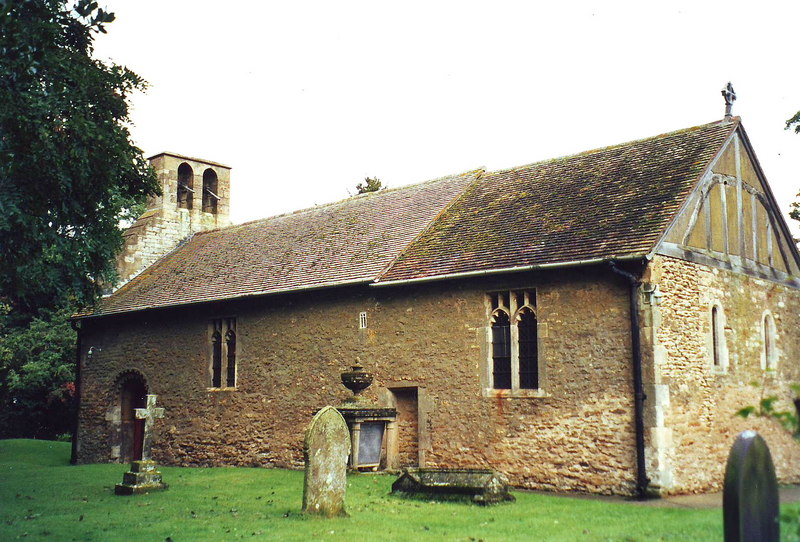Coates Medieval Settlement on:
[Wikipedia]
[Google]
[Amazon]
Coates medieval settlement is a
 The church, likely a
The church, likely a
deserted medieval village
In the United Kingdom, a deserted medieval village (DMV) is a former settlement which was abandoned during the Middle Ages, typically leaving no trace apart from earthworks or cropmarks. If there are fewer than three inhabited houses the convent ...
in the civil parish of Stow, in the West Lindsey district, in the county of Lincolnshire, England. It is about east of the village of Stow. It is a Scheduled Monument. Today there is just a farm with a farmyard and a church standing nearby.
History
The village of Coates was recorded in the Domesday Book of 1086, having then six households. In the late 12th century, the church and land of the village were given to Welbeck Abbey in Nottinghamshire. The population of the village had increased by the early 14th century, but later in the century was reduced by theBlack Death
The Black Death (also known as the Pestilence, the Great Mortality or the Plague) was a bubonic plague pandemic occurring in Western Eurasia and North Africa from 1346 to 1353. It is the most fatal pandemic recorded in human history, causi ...
, and did not recover.
 The church, likely a
The church, likely a Saxon
The Saxons ( la, Saxones, german: Sachsen, ang, Seaxan, osx, Sahson, nds, Sassen, nl, Saksen) were a group of Germanic
*
*
*
*
peoples whose name was given in the early Middle Ages to a large country (Old Saxony, la, Saxonia) near the Nor ...
foundation, is dedicated to St Edith of Polesworth. Much of the surviving architecture is late Norman, 12th-century, but it has alterations and additions up to Georgian period, including a double bellcote. The church has a low and small nave and chancel. It contains a 15th-century rood screen
The rood screen (also choir screen, chancel screen, or jubé) is a common feature in late medieval church architecture. It is typically an ornate partition between the chancel and nave, of more or less open tracery constructed of wood, stone, or ...
, the only one in Lincolnshire. There is a Jacobean family pew at the west end, and the rest of the seating is just rough benches sometimes described as "rustic". There is the royal coat of arms of Charles I dating from 1635 and monumental brass
A monumental brass is a type of engraved sepulchral memorial, which in the 13th century began to partially take the place of three-dimensional monuments and effigies carved in stone or wood. Made of hard latten or sheet brass, let into the paveme ...
es to a William Butler (died 1590) and his wife; the figures on these are small. In a niche there is a demi-figure made of alabaster of a Brian Cooke who died in 1653. There are remnants of 15th-century () and 1597 stained glass
Stained glass is coloured glass as a material or works created from it. Throughout its thousand-year history, the term has been applied almost exclusively to the windows of churches and other significant religious buildings. Although tradition ...
in situ. Outside, just south of the chancel, is the tomb of the Maltby family comprising an urn on a table with tapering columns as legs, with a sarcophagus
A sarcophagus (plural sarcophagi or sarcophaguses) is a box-like funeral receptacle for a corpse, most commonly carved in stone, and usually displayed above ground, though it may also be buried. The word ''sarcophagus'' comes from the Greek ...
underneath.
Earthworks
Today at Coates-by-Stow there are two farms, a hall, several cottages and the Grade I listed Church of St Edith. Medieval ridge and furrow cultivation is discernable in the field immediately west of Grange Farm. In the adjoining field to the west are the earthworks of the village. There is a west–east roadway, shown by a ditch of length and about deep; on both sides of this are rectangular ditched enclosures, where houses and outbuildings once stood. North of the northern range of buildings are indications of large rectangular enclosures, thought to have been medieval paddocks; inside these can be seen the ridge and furrow pattern of earlier cultivation in that area. Further to the west, at , there is an L-shaped water-filled depression about west of the church, evidently the remaining part of a moat. It is thought that there was a group of buildings within the moat, extending over an area where Coates Hall and Hall Farm now stand. The site may have been agrange
Grange may refer to:
Buildings
* Grange House, Scotland, built in 1564, and demolished in 1906
* Grange Estate, Pennsylvania, built in 1682
* Monastic grange, a farming estate belonging to a monastery
Geography Australia
* Grange, South Austral ...
of Welbeck Abbey, established in the late 12th century, of which only the church, whose oldest parts date from that time, survives.
See also
* List of lost settlements in the United KingdomReferences
{{Authority control Deserted medieval villages in Lincolnshire Scheduled monuments in Lincolnshire West Lindsey District